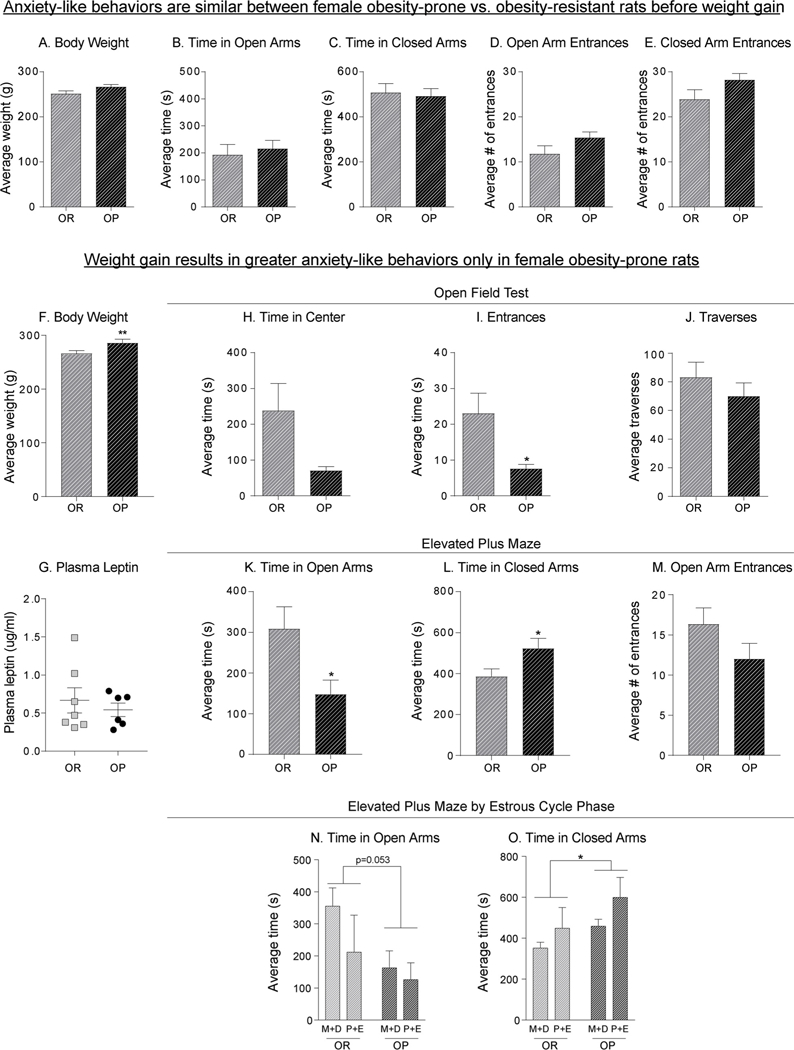Fig. 5.

Similar to males, anxiety-like behaviors emerge with spontaneous weight gain in obesity-prone females and anxiety-like behavior varied across the cycle in both groups. A) Average body weight is initially similar between obesity-prone and obesity-resistant female rats. B–E) In the absence of weight differences, anxietylike behavior in the elevated plus maze does not differ between obesity-prone and obesity-resistant females. F) Similar to males, obesity-prone females become heavier than obesity-resistant females as they age. G) Average plasma leptin concentrations did not differ between groups. H–J) Measures of anxiety-like behavior in open field test. Obesity-prone females tend to spend less time in the center, and made significantly fewer entries to the center than obesity-resistant females. K–M) Measures of anxiety-like behavior in elevated plus maze indicate that obesity-prone females display increased anxiety-like behaviors. N–O) Measures of anxiety-like behaviors in elevated plus maze by estrous cycle phase; metestrus and diestrus (M+D), proestrus and estrus (P+E). Obesity-prone females spent less time in the open arms and more time in the closed arms compared to obesity-resistant rats, regardless of estrous cycle phase. Data are shown as mean ± SEM. * =p < 0.05, ** = p < 0.01.
